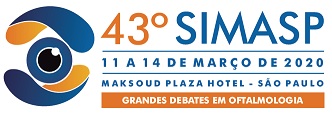Dados do Trabalho
Título
ROTATION AND REPOSITIONING OF TORIC INTRAOCULAR LENS WITH INTRAOPERATIVE ABERROMETRY: A SERIE OF CASES.
Introdução
Due to the emergence of new technologies and the increasing demands on the results of cataract surgeries, the use of intraoperative aberrometry has now increased. One of the most studied devices is the ORA® System (Alcon Laboratories, Inc., Fort Worth, TX, USA), which uses a new form of wavefront analysis, known as Talbot-Moiré Interferometry. It is able to provide intraoperative information, such as biometric data, real-time refraction, guide intraocular lens (IOL) positioning and incision clean relaxing. The report presents three cases that evolved with toric IOL rotation after cataract surgery, emphasizing the importance of complementary propaedeutics for the management of refractive correction by adjusting the IOL position with the use of intraoperative aberrometry.
Métodos
Report serie of cases, according to patient files.
Resultados
Report 3 cases that were submitted to phacoemulsification and Toric IOL implantation, that evolved with lens rotation.
As a form of treatment, IOL was repositioned with intraoperative aberrometry (ORA® System), promoting visual rehabilitation without correction of 20/20.
Exemple of the first case: Female, 47 years old, cataract in both eyes (BE). Apparent refraction: -6.00 -2.75 X 10 (20/25) right eye (RE) and -4.75 -3.00 X 180 (20/30) left eye (LE), addition +1,75 BE (J1). Phacoemulsification and IOL implantation (Symfony Toric +12.50 ZXT375 at 93°) were performed in the RE, using femtosecond laser (capsulorhexis and nucleous fracture) and ORA for IOL positioning. Three months after surgery, complained of low visual acuity in RE. Lens rotation was observed at 61°. Repositioning of the IOL with ORA was performed, promoting visual rehabilitation without correction of 20/20.
Conclusões
Rotation of the IOL or misalignments causes a significant deterioration of image quality. According to Felipe et al. and Langenbucher et al., approximately 3% of the cylinder's corrective power is lost for every 1 degree of calculated off-axis rotation. In 2015, Hatch et al. increased the probability of achieving a remaining refractive astigmatism of 0.50 D or less by 2.4-fold with the assistance of intraoperative aberrometry compared with standard methods for the placement of the IOL.
The cases reported show the management of the residual refractive error using intraoperative aberrometry (ORA System) for repositioning to the programmed axis. The use of intraoperative aberrometry has corroborated with the planning, demonstrating greater predictability and reproducibility.
Palavras Chave
cataract, toric intraocular lens, intraoperative aberrometry
Arquivos
Área
Catarata
Instituições
HOSPITAL OFTALMOLÓGICO DE BRASIÍLIA - Distrito Federal - Brasil
Autores
LAURA DAYANE MOREIRA DE JESUS, ISADORA FERREIRA NOGUEIRA, JADY FOGANHOLO, JESSICA THAIS CAMPOS LOPES GONÇALVES , LIANE DE MOURA SANTOS PEREIRA FERRAZ BAPTISTA, WILSON TAKASHI HIDA
